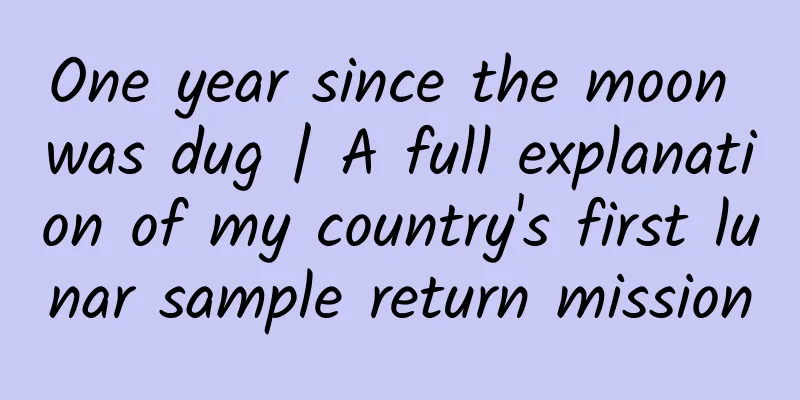The "core" of the watermelon is definitely true love! Why is the middle of the watermelon the most delicious? |Expo Daily

|
Why is the middle of a watermelon the most delicious? What is the best part of a watermelon? The center of the watermelon, of course! Whether you take your first bite at the tip or take a big spoonful in the middle, the experience is the best. It is sweet and has no watermelon seeds. Watermelon has marginal placenta, and the seeds grow concentrated on the inner wall of the ovary. The ovary wall is specialized to form a particularly thick fleshy pseudocarp. The ovary of the watermelon is divided into many chambers, each of which contains ovules, which later develop into watermelon seeds. During the expansion and growth process, watermelon seeds will not gather towards the center of the watermelon, so there are very few watermelon seeds in the center of the watermelon. Instead, the watermelon seeds are mainly distributed in the surrounding flesh. The part close to the outer rind has less nutrients such as sugar and fewer seeds. During the development of watermelon, the seeds are the machine that attracts sugar, and the placenta is the channel that transports sugar into the watermelon. The placenta is in the very center of the watermelon, so it is not difficult to understand why there is the most sugar around it. So, if someone gives you the most central part of the watermelon, it must be true love! Chinese scientists discover molecular water in lunar soil for the first time Whether there is water on the moon is crucial for lunar evolution research and resource development. Studies of Apollo samples collected from 1969 to 1972 showed that no water-containing minerals were found in the lunar soil. Since then, the lack of water on the moon has become a basic assumption in lunar science, which has had an important impact on understanding the evolution of lunar volcanoes and the origin of the moon. Afterwards, scientists used highly sensitive characterization techniques to detect "water" (H+, OH-, H2O) in some glasses and minerals from the Apollo lunar samples collected that year, but there was no conclusive evidence of the existence of water molecules. The lunar soil samples collected by my country's Chang'e 5 are the youngest basalt (~2 billion years old) and the lunar samples with the highest latitude to date, providing new opportunities for the study of lunar water. Chen Xiaolong, a researcher at the Institute of Physics of the Chinese Academy of Sciences/Beijing National Center for Condensed Matter Physics, Jin Shifeng, an associate researcher, Hao Munan, a doctoral student, and others, together with Guo Zhongnan, an associate professor at the University of Science and Technology Beijing, Yin Bohao, an engineer at Tianjin University, Ma Yunqi, a researcher at the Qinghai Institute of Salt Lakes of the Chinese Academy of Sciences, and Deng Lijun, an engineer at Zhengzhou University, discovered an unknown mineral crystal rich in water molecules and ammonium on the moon, ULM-1, in the lunar samples brought back by Chang'e 5. This marks the first time that scientists have discovered molecular water in lunar soil, revealing the true existence form of water molecules and ammonium on the moon. , duration 00:37 Why is cramming before the exam useless ? Mainly because of staying up late... A study published in the journal Nature suggests that when rats are sleep-deprived, a key brain signal associated with long-term memory, called sharp wave ripples, is weakened, and even a normal night of sleep afterwards is not enough to repair this brain signal. Neurons in the brain are highly interconnected, and they often fire together in regular or repetitive patterns, and spike wave ripples are one of these firing patterns. Such sharp wave ripples occur in the hippocampus, a key part of the brain where memories are formed. These discharge patterns facilitate communication with the neocortex, where long-term memories are stored. Sharp wave ripples occur both when awake and in deep sleep, but bursts of sharp wave ripples during sleep seem to be more helpful in converting short-term memories into long-term memories. By recording the brain activity of rats while they explored a maze, the research team found that sleep-deprived rats had decreased discharge intensity and organization of sharp wave ripples. Even in subsequent sleep, these brain signals failed to fully recover. This suggests that sleep is not only essential for the initial formation of memory, but also plays an important role in the subsequent processing and long-term storage of memory. The study explains why last-minute cramming before an exam is often ineffective, as lack of sleep hinders the memory consolidation process. In addition, the study found that disrupted sleep may help prevent long-term memory storage, which provides new ideas for treating diseases such as post-traumatic stress disorder. Neurons in the hippocampus play a role in learning and memory. Image credit: Cell Applications Inc That's even more annoying. It turns out that termites and cockroaches are close relatives! The hot and humid season is the peak mating season for termites. The huge "army" of termites appears in groups, giving people who are afraid of insects and crowds (such as the editor) goose bumps. Although there are more than 3,000 species of termites, their living habits and distribution ranges vary greatly. For example, the soil-dwelling fungus-cultivating group, which feeds on the fungi they cultivate and brings delicious food to humans, is a relatively "sensible" group. But wood-dwelling species feed directly on wood. Human wooden floors or furniture are considered delicacies to them. They have to build nests while eating, which makes them look disgusting in comparison. Although both termites and ants have the word "ant" in their names, they are different. Ants belong to the order Hymenoptera and are close relatives of bees. Termites belong to the order Blattagia (Blattella are the familiar cockroaches), and are a special type of social insects. Helium, your name is the sun Unlike most chemical elements, helium was not originally discovered on Earth, but in the Sun. In 1868, French astronomer Pierre Janssen observed a total solar eclipse with a spectroscope and saw multi-colored bands on the prominence, which is the solar spectrum. He found that there was a thin yellow line on the solar spectrum, which was different from the spectra of various elements known at that time. In the same year, British astronomer Norman Lockyer also discovered this spectral line in the solar spectrum. He asserted that this spectral line came from a new element in the sun and named it helium (which means "sun" in Greek). However, their discoveries were not recognized: chemists did not believe that astronomers would discover new elements, and no evidence of the element could be found on Earth at the time. The yellow spectral line was mistakenly identified as coming from sodium. It was not until 27 years later that British chemist Ramsay observed this yellow spectral line again when studying uranium ore (when uranium undergoes alpha decay, helium nuclei are released). Verification samples showed that the two spectral lines were exactly the same, and humans finally discovered helium on Earth. After 27 years of confusion and ridicule, this "element from the sun" was finally accepted into the periodic table! In the universe, the reserve of helium ranks second, second only to hydrogen, accounting for about 24%. Some of it is directly produced in the Big Bang, and some of it comes from the nuclear fusion of hydrogen in stars, which is why its spectral lines were found in the solar spectrum. Visualized spectrum of helium. When the electrons of each element release energy, they emit various lights in different states, forming a unique spectrum, which is equivalent to an "identity card". Humans first discovered helium by observing its spectrum when observing the sun. The content is compiled from China Science Popularization Expo Weibo, Institute of Physics, Chinese Academy of Sciences, China Science Daily, Shanghai Natural History Museum, Museum This article was first published on China Science Expo (kepubolan). Please indicate the source of the public account for reprinting |
>>: Return to traditional wisdom: Are you also recalling this "hot potato" in the kitchen!
Recommend
How much does it cost to make a Maoming marriage and love mini program? What is the quote for making a Maoming marriage and love mini program?
The factors affecting the quotation of Maoming Ma...
Although he is the "king" of penguins, he always acts cute in Antarctica
In the silvery white world of Antarctica, a group...
5 things you may not know about fried chicken
Who can resist a piece of fried chicken? Golden a...
Zhu Shiba's "Xuelang Plan: From Settlement to Selling Courses" explains the whole process of Xuelang selling courses
Zhu Shiba's "Xuelang Plan: From Settleme...
What are short video information flow ads? What is the difference with DOU+?
Unknowingly, feed stream (also known as informati...
iPhone 6: The pain of mobile phone design revealed
On September 9, the long-awaited iPhone 6 finally...
There are certain rules to follow when taking medicine. Are you still taking medicine the wrong way?
Everyone knows that taking the wrong medicine may...
The first electron beam was successfully accelerated. What exactly is HEPS?
March 14, 2023 The 13th Five-Year Plan for Nation...
Why can’t I resist shopping at night? I finally found the reason!
"Double 11" is about to kick off. Under...
After 4 days of high fever, a 3-year-old child was diagnosed with "white lungs"! Why is mycoplasma pneumonia so aggressive? How to prevent it?
Recently, the incidence of mycoplasma pneumonia i...
Mobile payment users will increase to 790 million in 2020: Alipay and Meituan Pay build a closed business loop
With the popularization of mobile smart terminals...
Advertising strategies for the four hot-selling industries during Double Eleven!
Double Eleven is approaching. In the e-commerce b...
Review of recent epidemic-related rumors: "Those who are used to only looking at pictures can shut up now!"
Review of recent rumors related to the epidemic R...
Trend trading dad, professional trader: ten lessons for beginners in stock trading
Today, Dongguan SEO Feng Chao recommends to you t...
Cross-border e-commerce has also fallen in love with live streaming?
Unlike previous Double Elevens, this year's D...









